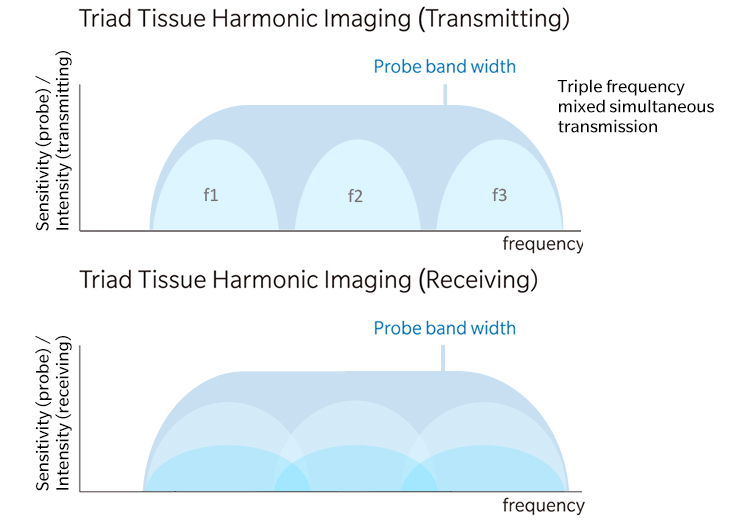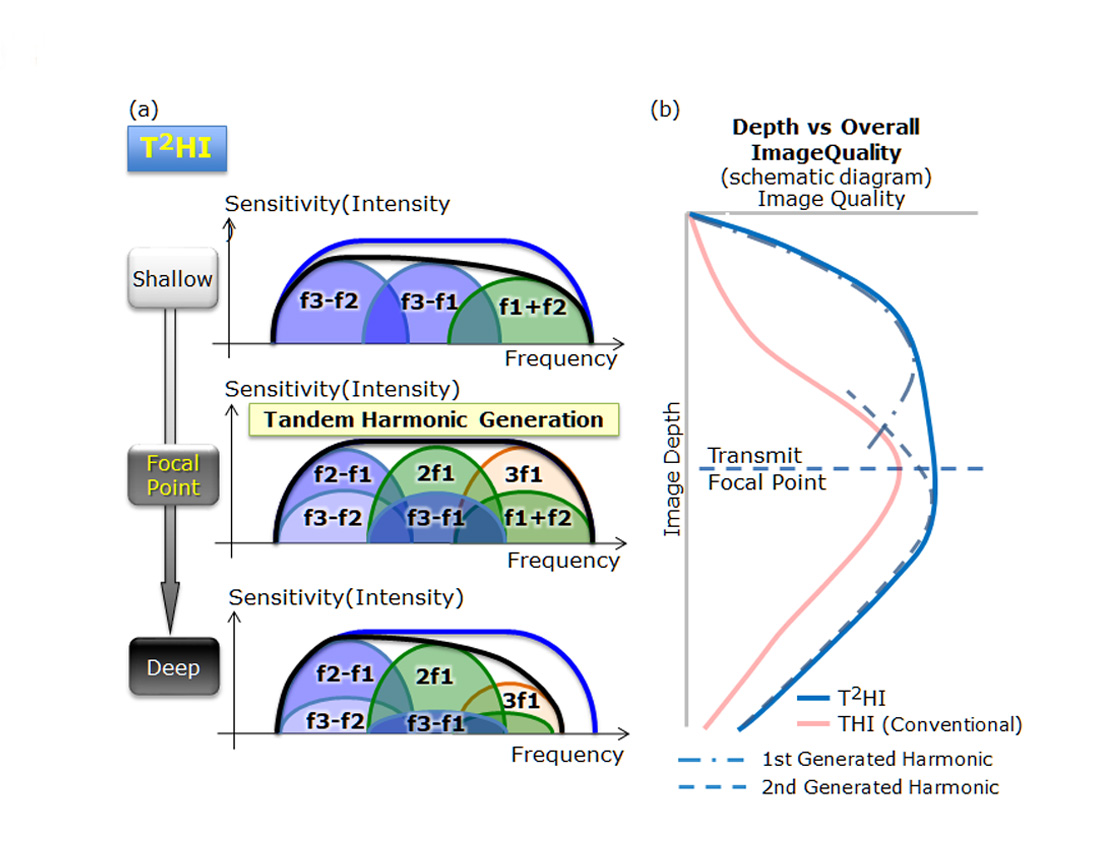
T2HI
Triad Tissue Harmonic Imaging
- T2HI is a new transmission and reception technology that maximizes the use of Konica Minolta's ultra-wideband probe characteristics
- Achieves advanced resolution and penetration using all of differential and additional harmonic components in the bandwidth
- Improves S/N (signal-to-noise) ratio in the shallow area by multiple depth generation of harmonics (tandem harmonic generation)
Development of new technology, T2HI
Konica Minolta developed a new transmission/reception technology called T2HI. By covering the probe band with three transmission frequencies, T2HI makes full use of ultra-wideband.
Furthermore, by adjusting the transmission intensity of each frequency component, the generation intensity and depth of generation of various generated harmonics can be controlled, and both high resolution and high S/N (signal-to-noise) can be achieved from shallow to deep areas.
However, in order to put it to practical use, it is necessary to combine probe characteristics and transmission/reception characteristics. From development stage of the probe, Konica Minolta has succeeded in developing T2HI by closely matching probe technology and transmission/reception technology.

Schema and clinical images of the thyroid.
(a) T2HI images — Excellent tissue separation (sharp and with high contrast) at shallow isthmus (arrows) (focus = 20mm).
(b) Conventional THI images (Konica Minolta system) — Shallow area is unclear (focus = 20mm).

Schema and clinical images of MP (metacarpophalangeal) joint,
(a) T2HI images — A1 pulley (pink upper arrows) is described clearly, the sharp boundary between the bursas and tissue is excellent (yellow lower arrows), and the bone surface is smooth.
(b) Conventional THI images (Konica Minolta system): surpassed in quality by T2HI images.
Improved S/N (signal-to-noise) in the shallow area by tandem harmonic generation
Konica Minolta's ultrasound systems provide high-definition, high S/N (signal-to-noise) images from shallow to near-focal areas. T2HI improves S/N (signal-to-noise) ratio in the shallow region, which has been an issue with THI. The intensity ratio of each frequency component is adjusted to consider the balance of the transmission sensitivity of the probe and beam convergence in the slice direction by acoustic lenses. As shown in the figure below, we have succeeded in securing S/N (signal-to-noise) in the entire region of interest by realizing multiple depth generation of harmonics (tandem harmonic generation) that generate one of the harmonics generated in the same frequency band in the shallow part and the other in the focal part.

Imaging depth versus (a) distribution of generated harmonic components, and (b) overall image quality with the T2HI.
The high-quality image area is expanded through two-step harmonics generation (tandem harmonic generation).
Ultrasound technology
Digital Radiography technology
*This site is intended for healthcare workers.
